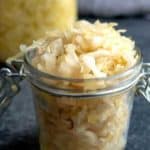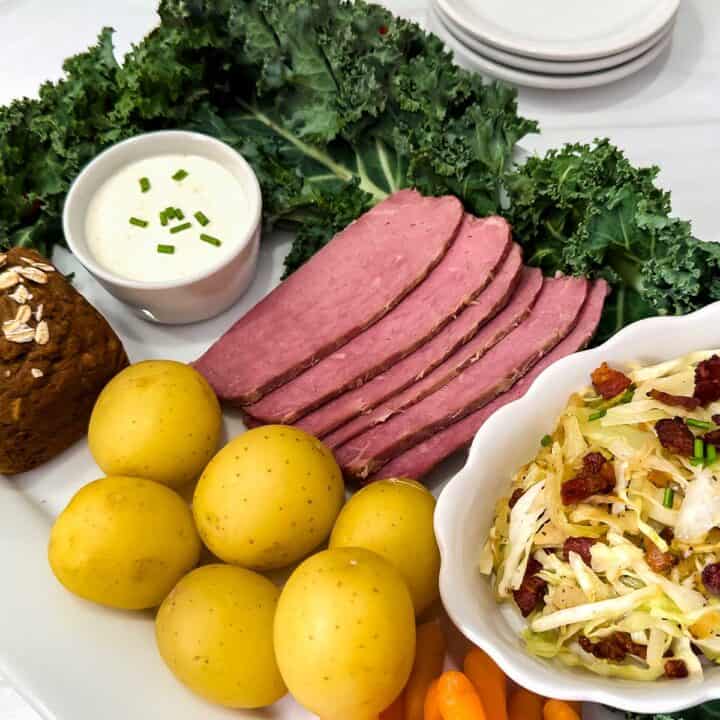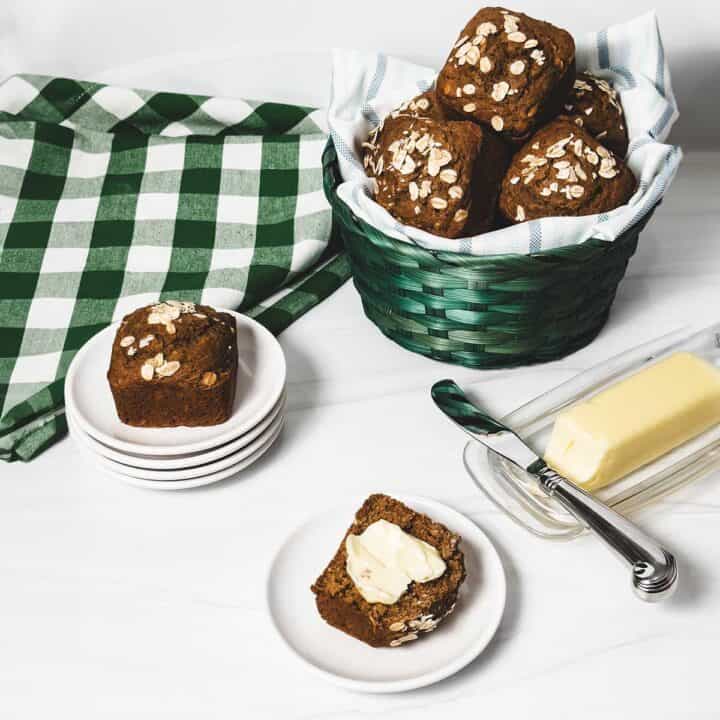Homemade Sauerkraut is rich in probiotics and vitamins, and made with two simple ingredients – cabbage and salt. It is slightly acidic and sour, and full of flavor. One taste and you will never go back to the commercial sauerkraut sold in supermarkets. Sauerkraut is incredibly versatile, and goes with so many things. Try it hot on a reuben, cold on a salad, dressed up with sautéed onions and bacon, or on its own as a refreshing snack. Did I mention that it’s super simple to make?
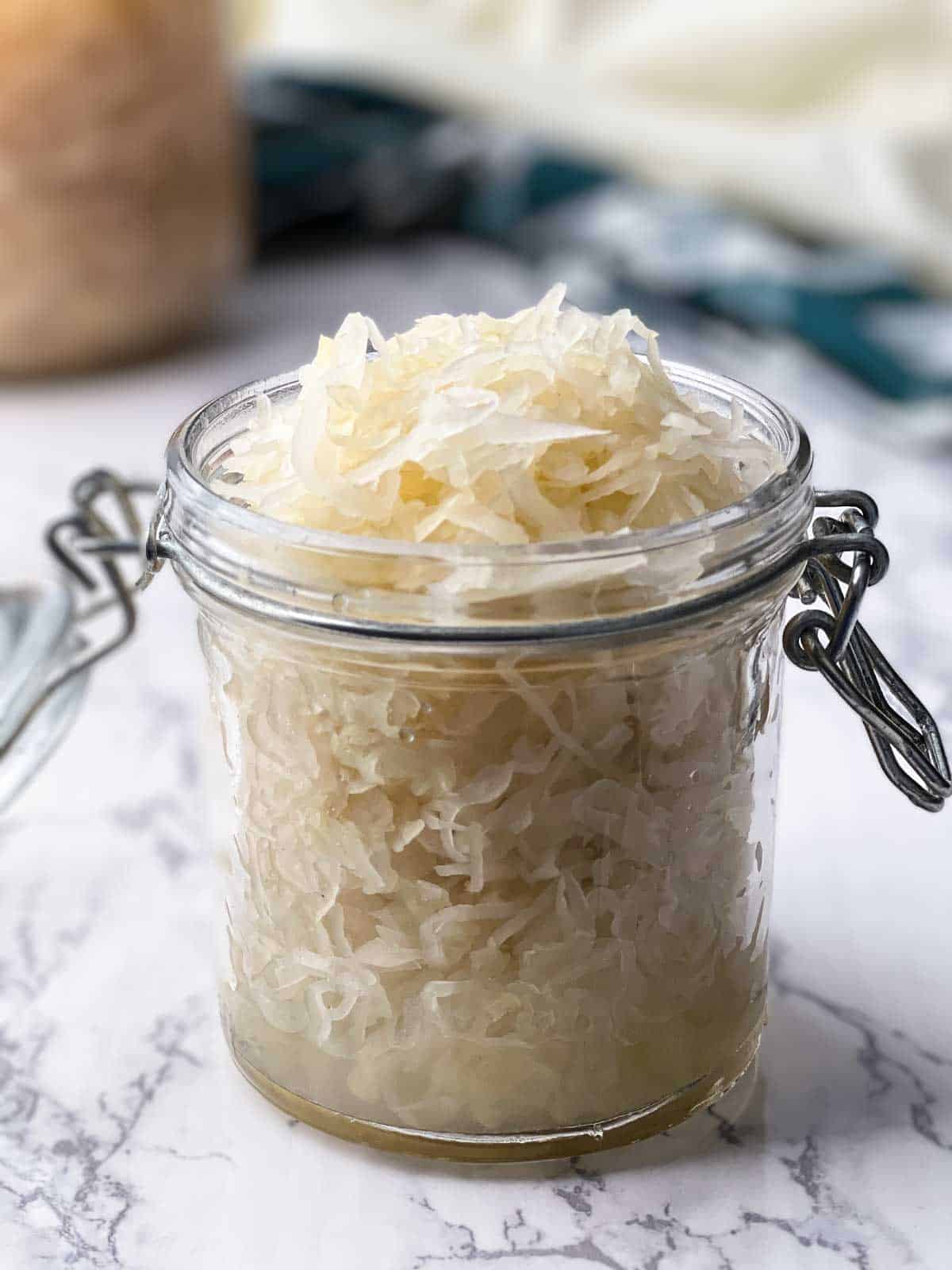
Several years ago on a visit to a friend in Germany, the subject of sauerkraut came up. I asked “how is it made?” The reply was cabbage and salt. I couldn’t believe that only those two ingredients produced sauerkraut, so I asked again.
The friend was slightly perturbed that I asked again. He again answered, cabbage and salt! Armed with that knowledge, the Master Taste Tester suggested that we should try our hand at making sauerkraut, which we did. I first blogged about it in 2012!
Fast forward to now with ten years of continued experimentation. So far, we have consumed gallons of the sauerkraut, with more jars fermenting away! Unlike the original experiment, we’ve learned a few things along the way, and have produced a consistently better product. In fact, in the words of the Master Taste Tester, “this is fantastic!” Up to this point, his supreme compliment was “this is pretty good!”
Follow along step by step on how I made this amazing homemade sauerkraut.
The pages turn with a click or automatically after 7 seconds.
Ingredients for Homemade Sauerkraut
As I previously indicated, the ingredients for homemade sauerkraut are simple – cabbage and salt. As far as the cabbage is concerned, I’ve tried organic, regular, supermarket, and farmer’s market cabbage. It seems from all of this that the best cabbage to use is that which is freshest. Otherwise, we can’t really be definitive about the best in terms of source.
For the salt, I consistently use coarse light grey Celtic sea salt. You can use other salts. However, you should never use salt with additives like iodide, sugar, or anti-caking agents such as calcium silicate. The reason is that they can interfere with the fermentation process. Therefore, you should stay away from table salt, iodized salt, and Kosher salt. The best salts to use are those that are unprocessed, i.e., salts that still have their complete natural profile of minerals.
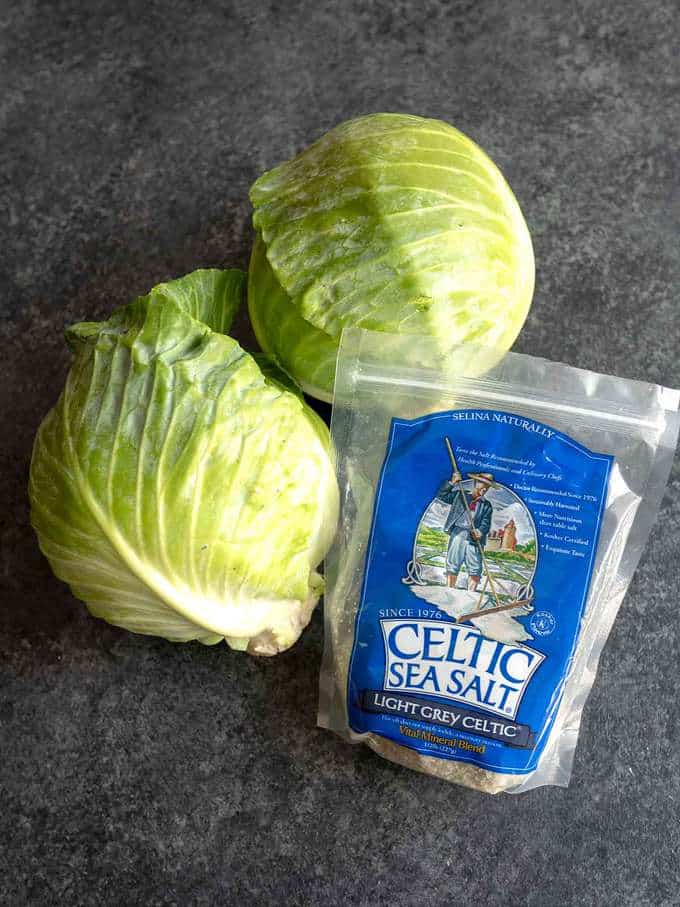
Shredding the Cabbage
The first thing that I did was to shred the cabbage. In the past, I’ve used a food processor or a sharp knife. The key is shredding the cabbage very thinly. My old food processor didn’t do a good job at all with shredding, so I used a sharp knife. My new food processor has a variable size shredding blade, which is perfect. I’ve found that the perfect size, at least for us is 1-mm shreds.
Before I shredded the cabbage, I cut away the core and tried to cut away as many of the stalky bits as possible.
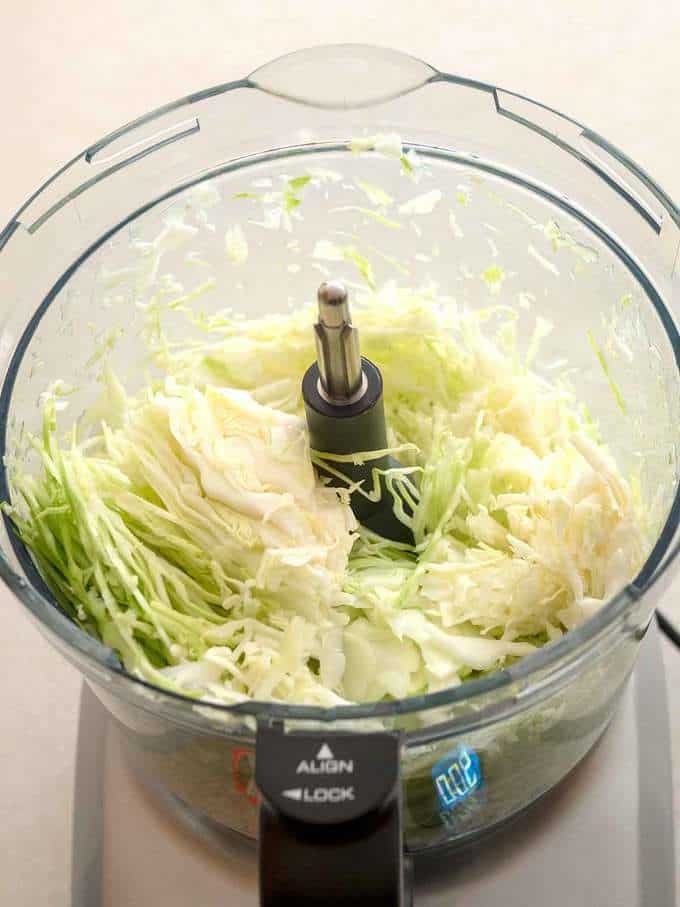
Massaging and Pounding the Cabbage
Through the years, I’ve found that 32 ounces of shredded cabbage is the perfect quantity for the half-gallon mason jars that I use.
I’ve also found that 2 Tablespoons or 1.75 ounces of sea salt works best for us.
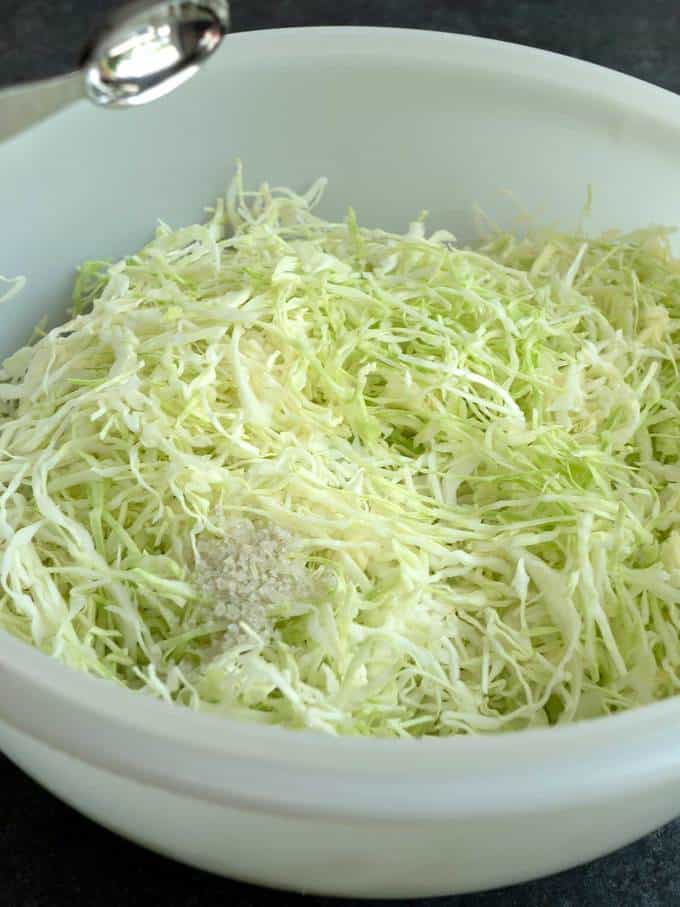
Now comes the time-consuming part of making the Sauerkraut – massaging the salt and cabbage together to begin breaking down the cabbage so that it releases some of its liquid. I combined all of the cabbage in a large bowl, and used my very clean hands to do this. After about 5 minutes, the cabbage began to release some liquid and to wilt. It also loses quite a bit of volume.
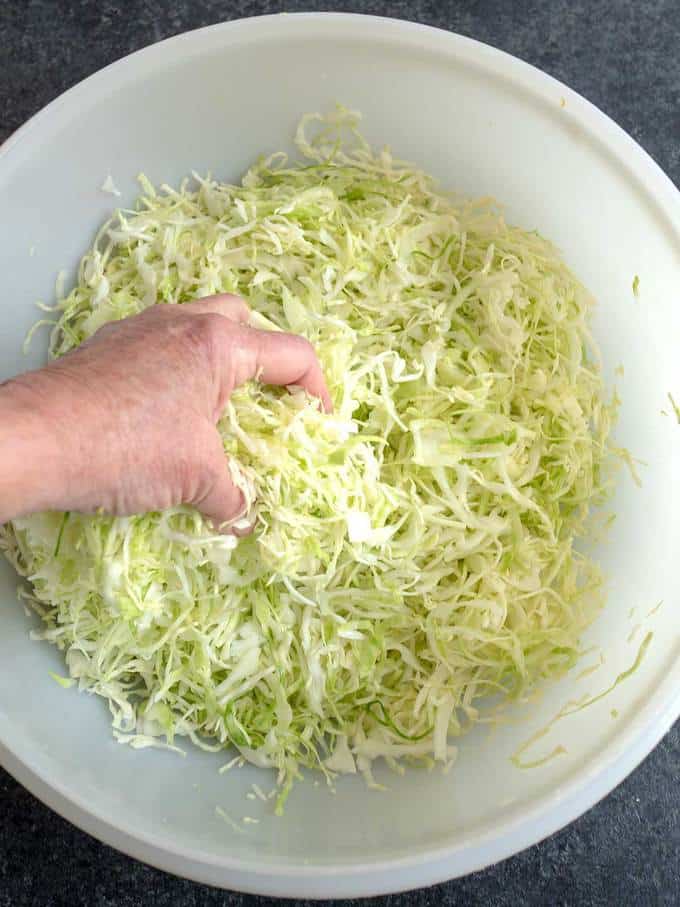
After massaging the cabbage, I used a potato masher to pound the cabbage for another 4 minutes or so. During this time, I lifted up the cabbage with the potato masher several times and pounded it down again.
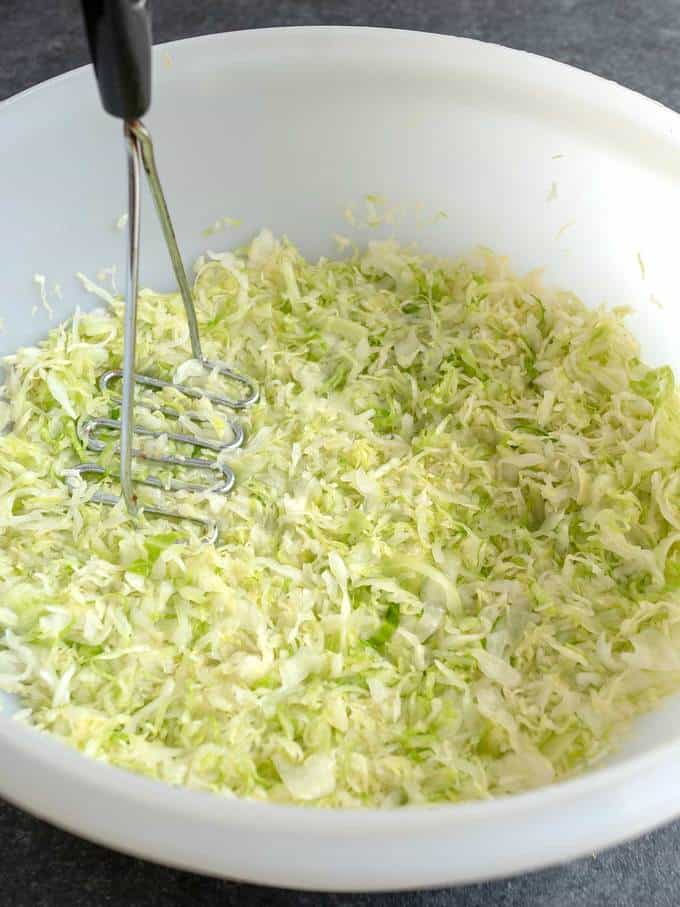
Packing the Cabbage into Mason Jars
Through the years, I’ve consistently used half-gallon mason jars for the fermentation of the cabbage.
I started by placing a canning funnel on top of the jar. Then, I used kitchen tongs to add the cabbage to the jar. I used a tart tamper to push the cabbage down in the jar. Then, I added a cabbage leaf on top of the cabbage and a glass disc to weigh the cabbage down. I got the glass discs from Amazon.com.
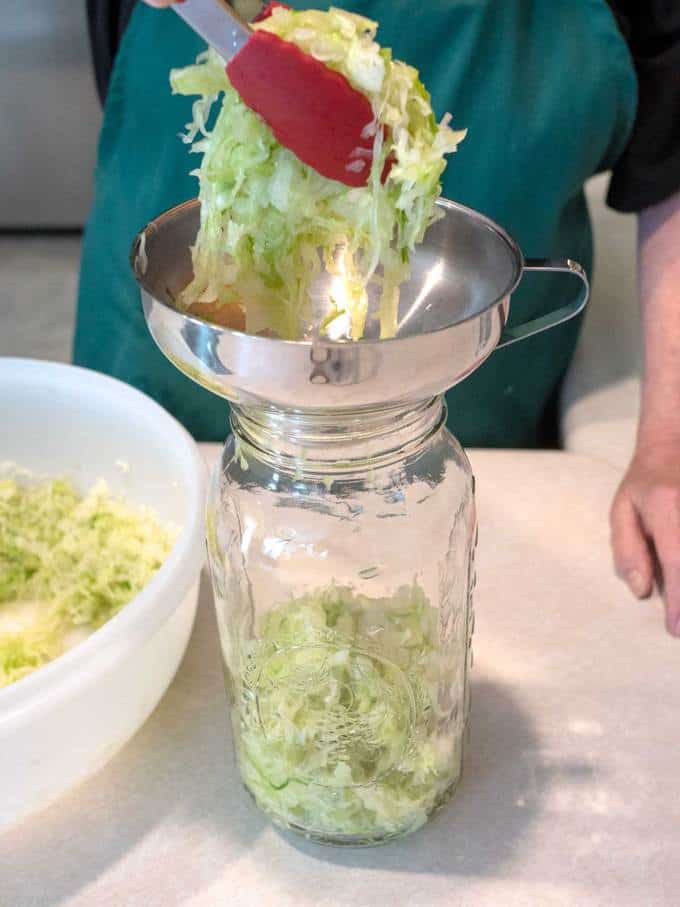
I’ve found that the age of the cabbage has somewhat of an impact on the amount of liquid released during the massaging and pounding. Basically, the fresher the cabbage, the more liquid is released. Generally, however, I need to add up to 2-cups of filtered water to ensure that the cabbage is fully submerged in the jar.
As a final step I put the lid on the jar with an air-lock device that I purchased from Amazon.com. The air-lock device seals air out of the fermenting jar, but allows air and carbon dioxide from the fermenting sauerkraut to safely escape. Thus, it helps to form an anaerobic environment (as further discussed below).
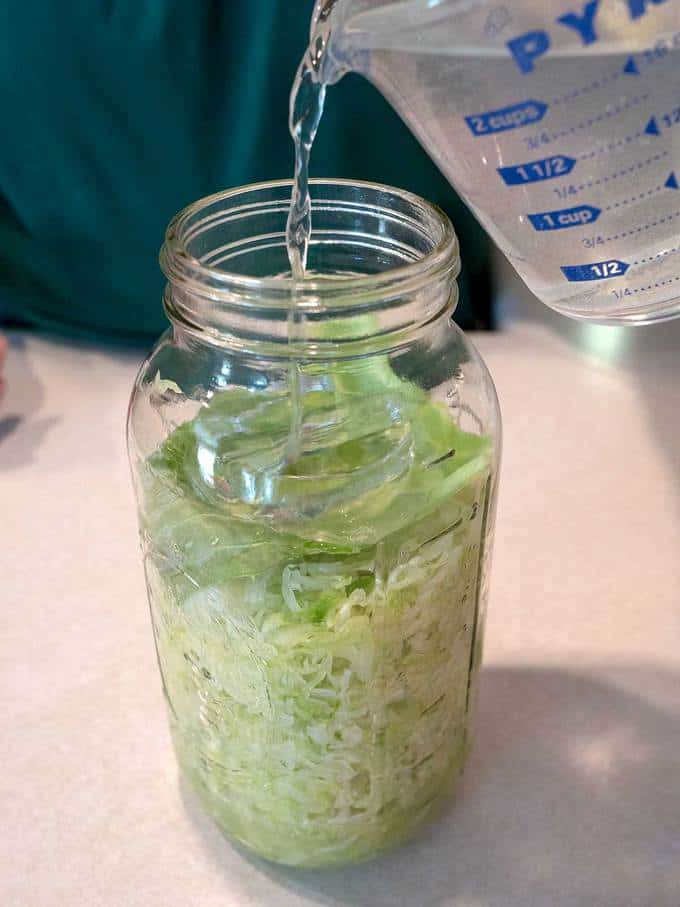
The Fermentation Stages for Homemade Sauerkraut:
Now comes the fermentation wait! In the fermenting stage, a biochemical change is brought about by the anaerobic or partially anaerobic oxidation of carbohydrates by either micro-organisms or enzymes. In sauerkraut, the fermentation process has a very specific purpose – to quickly proliferate through the food by Lactobacilli, lactic acid-producing bacteria. This causes the pH to be reduced, making the environment acidic and therefore unsuitable for the growth of unwanted bacteria.
In order for the sauerkraut to be a success, it must go through three different fermentation stages.
First, the fermentation is initiated by Leuconostoc mesenteroides, which produce carbon dioxide. This effectively replaces the oxygen in the jar, making the environment anaerobic or oxygen-free. When the lactic acids reach between .25 and .30%, Leuconostoc mesenteriodes bacteria slow down and die off. This takes between one and three days, depending on the temperature.
Second, Lactobacillus plantarum and Lactobacillus cumeris continue to ferment until a lactic acid level of 1.5 to 2% is reached. High salt and low temperature inhibit these bacteria, so the cabbage should not be over salted. In addition, the sauerkraut should not yet be refrigerated. Stage two continues for 10 to 30 days, depending on the temperature.
Finally Lactobacillus brevis completes the fermentation process. When the lactic acid reaches 2 to 2.5%, the Lactobacillus brevis reaches its maximum growth and the fermentation is complete. This final stage lasts for less than a week.
So what does this mean? First, the brine must always be above the level of the cabbage. Second, too much salt is bad. Third, an oxygen-free environment is essential to ensure that the good bacteria grow and the bad bacteria die. Finally, the whole fermentation process takes time.
The most interesting part of watching the fermentation occurs during the first week of the process. During this time, the color of the cabbage changes from green to a light beige.
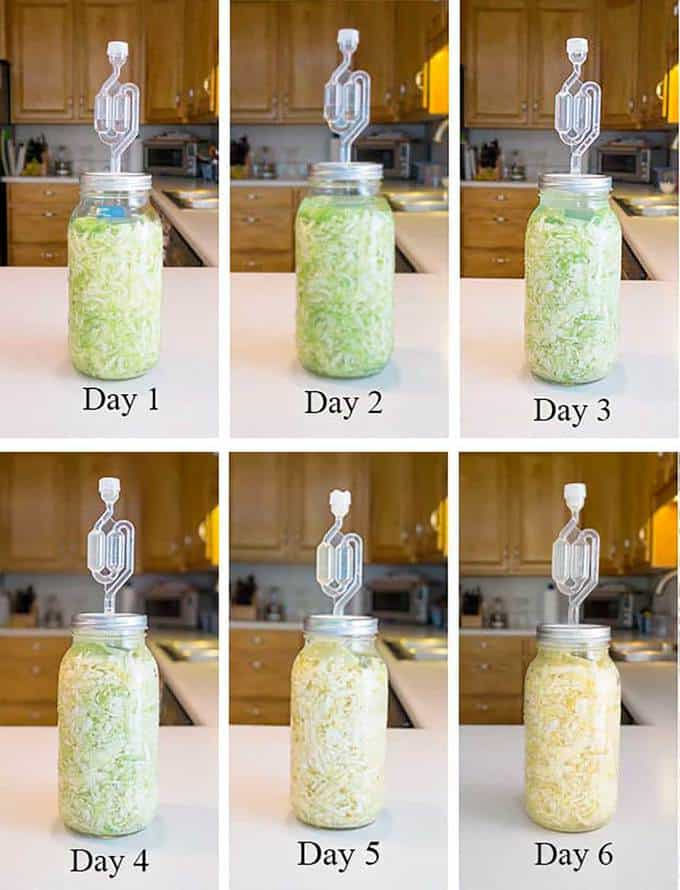
Also, during this time, the liquid level in the jar rises because of the CO2 being produced, and lots of bubbles escape through the air-lock device.
After the bubbling stops and the liquid level drops, another two to three weeks is required for the completion of the fermentation process.
Is the wait worth it? Absolutely! The Reubens made with the homemade sauerkraut are incredible. In addition, the Master Taste Tester eats the sauerkraut like he would a salad. Yum!
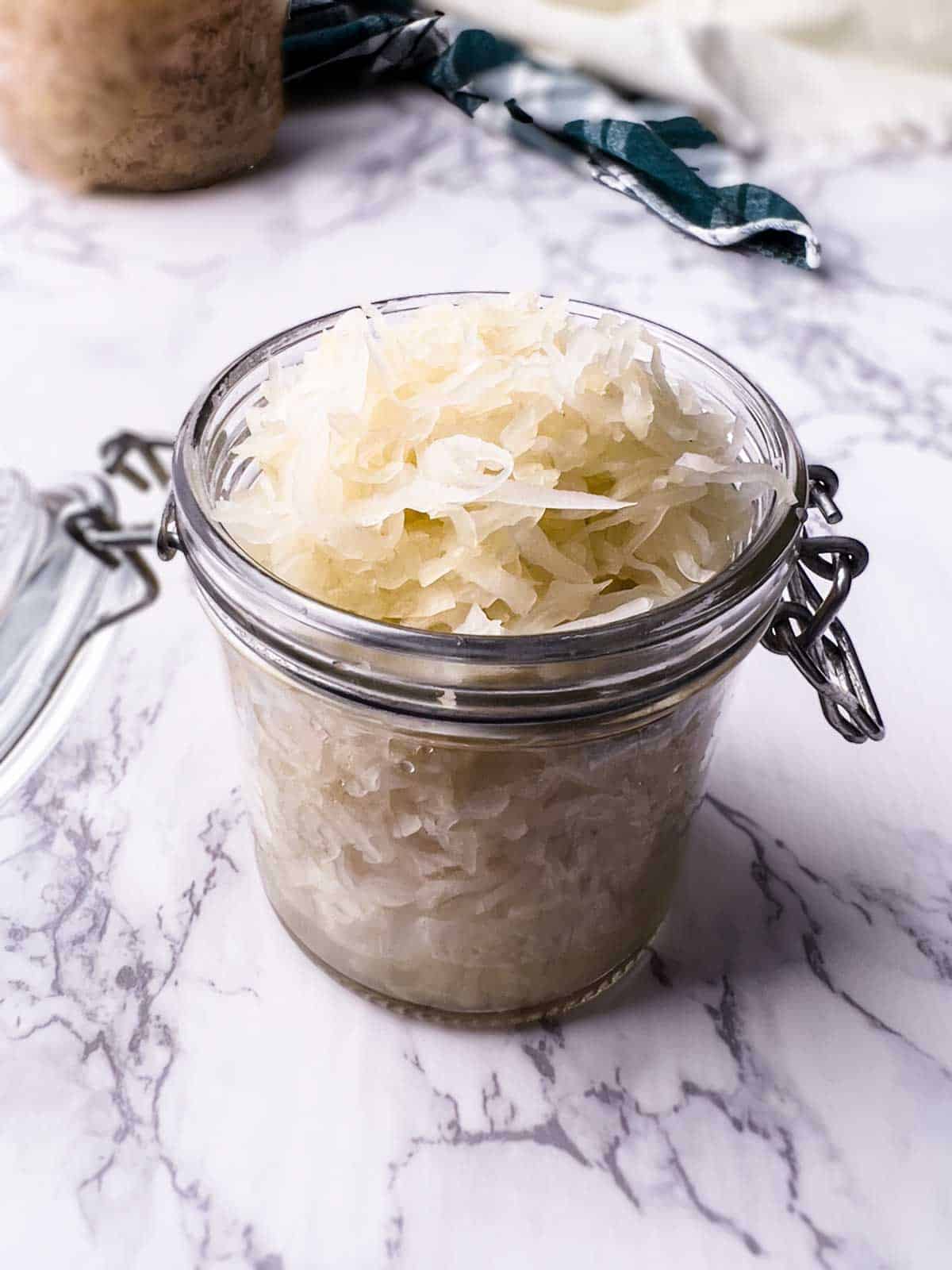
Update: I’ve been making sauerkraut for a number of years. Each time is an experiment trying to achieve the perfect sauerkraut.
I’m not there yet, but thought I’d pass on several things.
First, I’ve successfully used potassium chloride in place of the sodium chloride in making the sauerkraut. I use 1 ½ tablespoons of the potassium chloride.
Second, I initially used much less salt than most recipes would call for. The reason was that the Master Taste Tester likes his sauerkraut on the less crispy side. He felt that a reduced amount of salt would accomplish that. Most recently, I’ve experimented with adding more of the Celtic sea salt – 2 tablespoons per 2 pounds of shredded cabbage. Stay tuned to see if that will work.
Recipe
Want to Save This Recipe?
Enter your email & I’ll send it to your inbox. Plus, enjoy weekly doses of culinary inspiration as a bonus!
By submitting this form, you consent to receive emails from Pudge Factor.
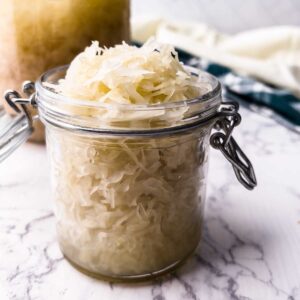
Homemade Sauerkraut
Ingredients
- 4 pounds of Cabbage (2 heads) or enough to make 32 ounces shredded
- 2 Tablespoons light grey Celtic sea salt or other unprocessed sea salt, divided (Tip 1)
- 1 ½ to 2 cups filtered water (See Tip 2)
Instructions
- Remove outer leaves from cabbage, retaining 1 leaf.
- Quarter cabbage and remove core. Cut into fine shreds with a sharp knife or food processor (See Tip 3). Add salt to the shredded cabbage. Massage cabbage with hands for several minutes to to begin the process of breaking down the cabbage and the release of brine. Let sit for an hour. Massage cabbage for another 3 to 4 minutes. Then, using potato masher, pound cabbage for 4 minutes.
- Add cabbage to sterilized half-gallon mason jar (See Tip 4). Top cabbage with retained cabbage leaf and weight (See Tip 5). Add enough filtered water to ensure that the liquid level is above the cabbage.
- Place lid with air-lock device on jar. Sauerkraut takes between 3 and 4 weeks to properly ferment. Yield: 2 pounds.
Tips/Notes
- Never use salt with additives like iodide, sugar, or anti-caking agents such as calcium silicate. The reason is that they can interfere with the fermentation process. Therefore, stay away from table salt, iodized salt, and Kosher salt. The best salts to use are those that are unprocessed, i.e., salts that still have their complete natural profile of minerals.
- Always use filtered water. The reason is that tap water tends to contain chlorine that can retard the fermentation process.
- My food processor has a variable shredding blade that allows me to cut the cabbage into 1 mm shreds. I’ve found that 1 mm is the ideal size at least for us.
- I use a canning funnel set on top of the mason jar to more easily add the cabbage to the mason jar.
- I’ve used different weights through the years such as glass discs, 4 ounce mason jars, and ziploc bags filled with water. The glass discs and mason jars tend to work the best.

